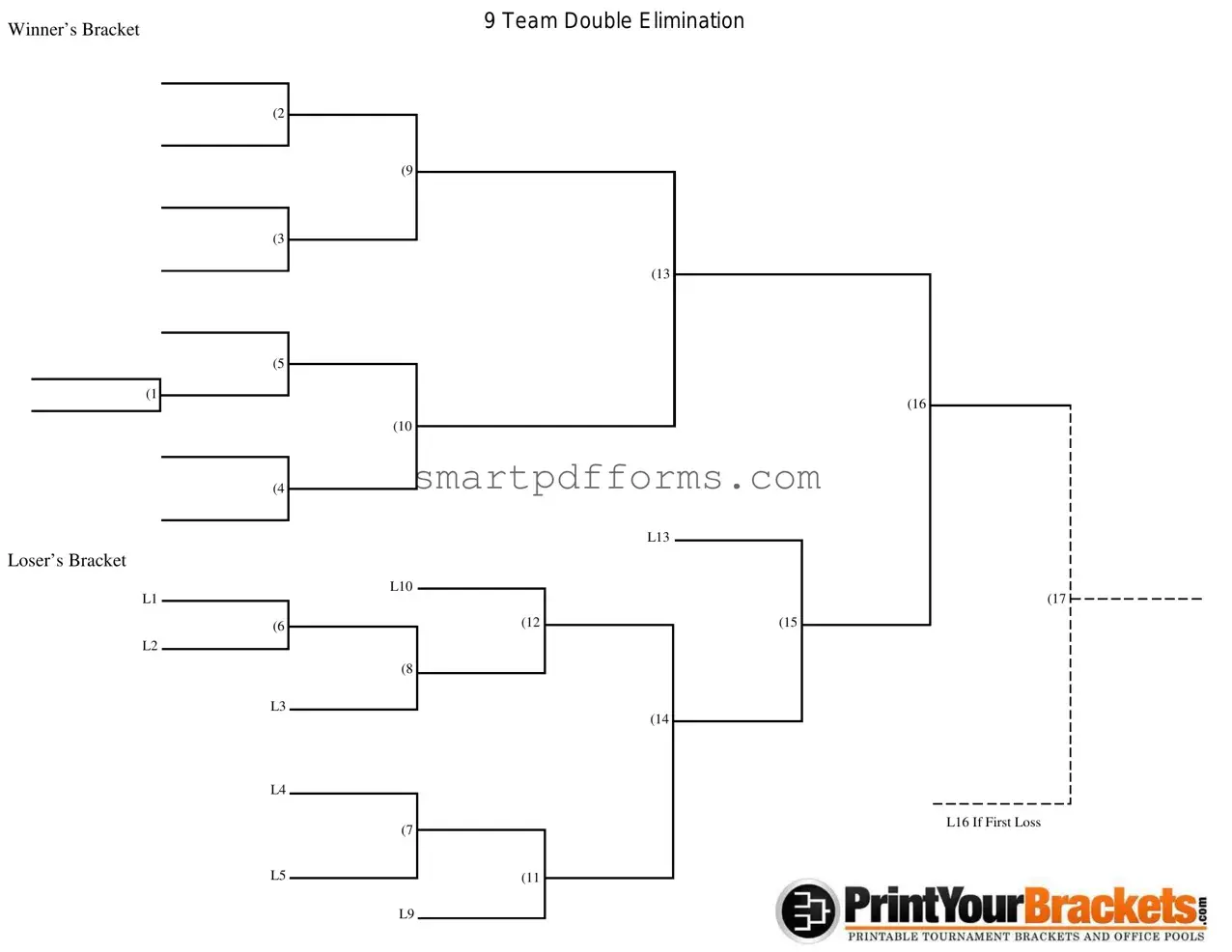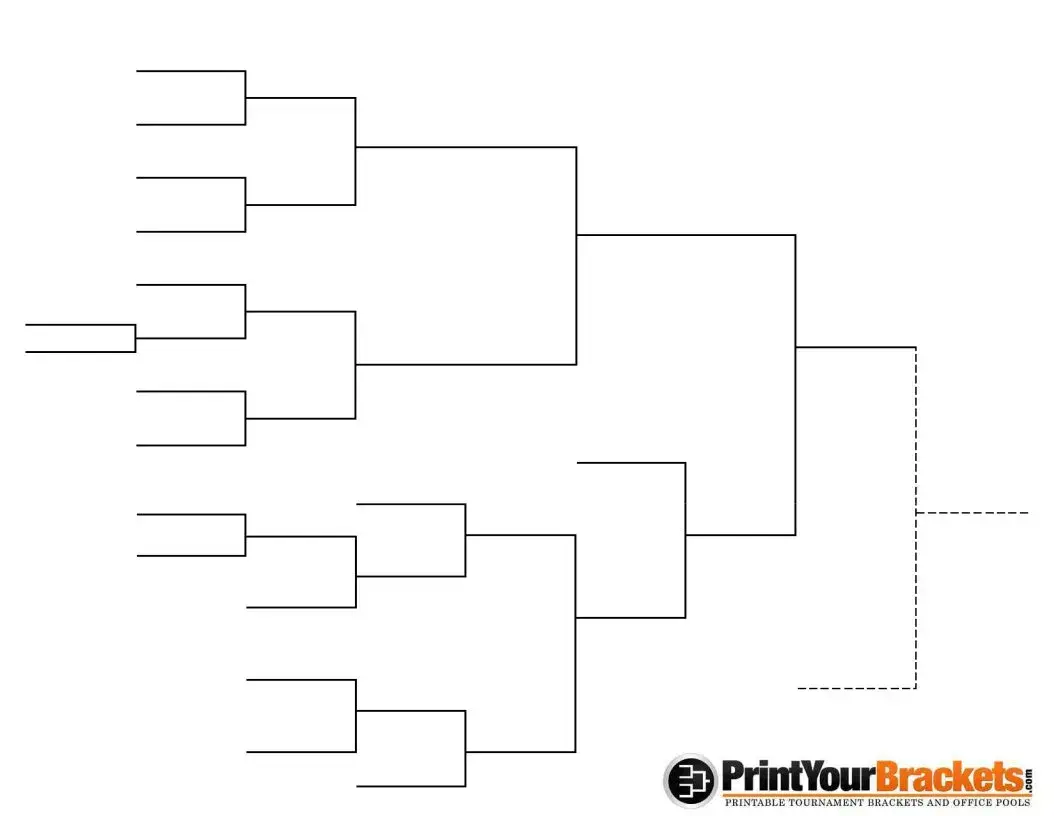Blank 9 Team Double Elimination Bracket PDF Template
The 9 Team Double Elimination Bracket form is designed for tournaments where each team has two opportunities to avoid elimination, ensuring a fair and competitive journey to the final victory. Teams navigate through both the winner's bracket and the loser's bracket; a loss in the former sends them to the latter, while a loss in the latter results in elimination. For those looking to manage a seamless and equitable tournament, click the button below to start filling out your form today.
Make This Document Now

